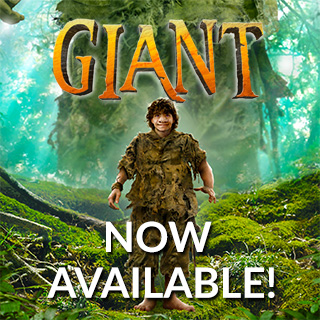Taking Time for Wisdom
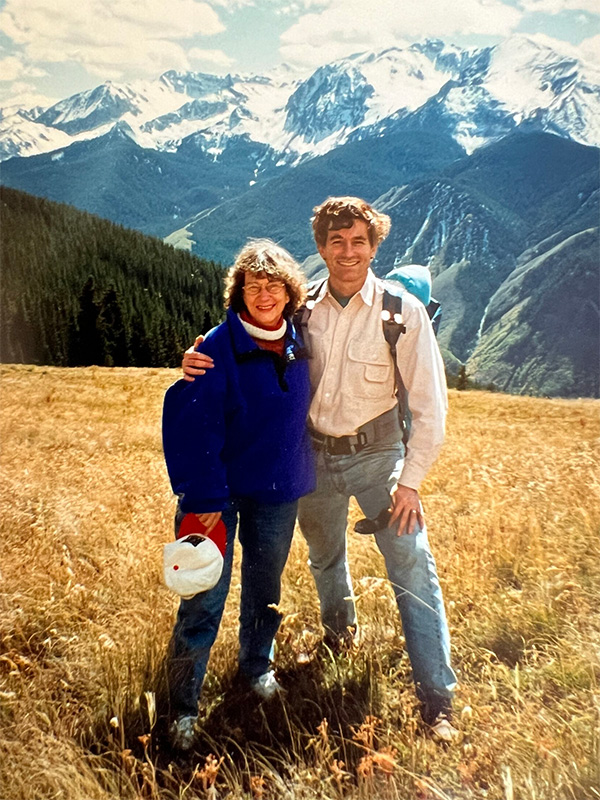 As an editor and teacher of literature, I have always been intrigued by what a book reveals about the author and how the author looks at life. When searching for new questions to create a challenging final essay exam in my high-school English classes, I often asked, “What do you know about the author and how the author looks at life from his or her book? Read between the lines!”
As an editor and teacher of literature, I have always been intrigued by what a book reveals about the author and how the author looks at life. When searching for new questions to create a challenging final essay exam in my high-school English classes, I often asked, “What do you know about the author and how the author looks at life from his or her book? Read between the lines!”
The Butterfly Effect
The way T. A. (Tom) Barron looks at life is everywhere in his books, from his earliest Kate books to his Merlin and Avalon epics, and there is probably nothing more present, driving, and defining in his heroes than the “butterfly effect.” A philosophy first suggested in a Ray Bradbury short story in 1952 and picked up again by meteorologist Edward Lorenz, it posited that the single shudder of a butterfly’s wings could change the course of weather in the world.
Barron powerfully extends that idea. In his earliest published novel, Heartlight, he creates a space-travel story where the naive young heroine, Kate, courageously flying on the wings of a beautiful blue morpho butterfly into space, discovers the very nature of matter. But it is the morpho butterfly itself that reflects Barron’s most basic value. Like the mere shudder of the wings of the morpho, Kate, a minor player on the world’s stage, by making the right decisions, by stepping up, can change the world. What an idea! An idea that, as Barron’s editor, I began to discover underlay the stories in all of his books, including the Merlin and Avalon epics.
Perhaps this is not surprising. Barron grew up on a ranch near Colorado Springs with three brothers and three sisters, and with a mother, Gloria, who spread her wings at an unlikely time of her life. The Barron ranch lay at the foothills of Pikes Peak, and Gloria Barron, having raised her seven children, grew intrigued with the hills—not just the living creatures but the very rocks and cliffs and stones. A graduate of Smith College as a young woman, at 57 she went back to school to study geology, hiking out daily to discover for herself connections between creatures of all kinds, even among the elements of the mountains themselves. Tom recalled that she was so impassioned with her discoveries that he might come home from school to discover a geode on their kitchen table or the specimen of some discovered frog in their refrigerator.
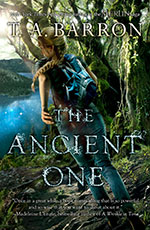 Was this obsessed late starter a role model for Tom? His mother’s passions certainly became his: that this earth is good, its creatures large and small, even its very rocks and crystals; that there is a connection among all things, living and nonliving; and that perhaps because of these powerful connections, a single human being could matter—must matter—in preserving the preciousness of the earth. Nowhere are these ideas more present than in Barron’s second book, The Ancient One, still one of my all-time favorites of his.
Was this obsessed late starter a role model for Tom? His mother’s passions certainly became his: that this earth is good, its creatures large and small, even its very rocks and crystals; that there is a connection among all things, living and nonliving; and that perhaps because of these powerful connections, a single human being could matter—must matter—in preserving the preciousness of the earth. Nowhere are these ideas more present than in Barron’s second book, The Ancient One, still one of my all-time favorites of his.
In The Ancient One Kate is now living in Oregon with an eccentric aunt (more than faintly resembling the eccentric Gloria). Suddenly facing the destruction of modern log cutting, she dares to enter the core of a redwood tree, passing through the rings of time to encounter the Halami, an ancient Native American people, to understand their partnership with the earth. Solving an age-old riddle, Kate is finally in a position to bring the answer back to her modern world and, yes, to face the loggers’ saws threatening the forest, but she discovers that she cannot get back unless she totally understands the tree. Unless, in fact, she becomes the tree:
“As she listened to the low, richly toned voice, Kate began to hear something else, something even deeper than the voice itself. It was a coursing sound, like the surging of several rivers. She realized with a start that it must be the sound of resins moving through the trunk and limbs of the tree. And, strangely, through her own self as well. . . . Back and forth, in and out, always changing, always the same. This was the sound, Kate realized at last, of the tree itself breathing. . . . The sound of life being exchanged for life, breath for breath.”
Not only is Kate beginning to understand her own necessary power in this extraordinary scene, but, I suspect, Barron was beginning to understand his power as a writer as well.
In his third Kate book, The Merlin Effect, Kate descends to the bottom of the sea in a remote lagoon in Baja, California, hoping to help her scientist father discover a sunken Spanish galleon. In bravely exploring the sea herself, she is swept into a whirlpool, waking on sodden land where she discovers a silver drinking horn, an ancient ship, and a mysterious bundle of rags that turns out to be the greatest wizard of all time, Merlin.
As a young man Barron studied in Oxford as a Rhodes Scholar after graduating from Princeton, and during those years he hiked and climbed the mountains of Scotland, England, and Nepal, where he contracted an illness so severe he nearly died. He came face to face with his own vulnerability and finiteness. When he encountered the Merlin stories during that time, he puzzled: Merlin was the wisest of the wise, the most wizardly of wizards, but a wizard—just like a young scholar—doesn’t spring upon the earth full-blown and powerful. What made a Merlin?
Merlin’s Journey
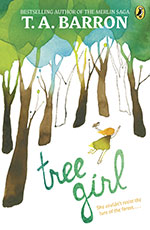 There is a deeply pantheistic frame to all of the journeys of the Barron books that follow the Kate trilogy. This quality is especially clear in his short novel Tree Girl, a fable about a brave girl and a magical forest, and in the books about Merlin and Avalon (12 titles in all, including the upcoming companion volume, Merlin: The Book of Magic). In developing his Merlin series, Barron discovered there is a patch of the wizard’s history that is a complete mystery: the years when he is an adolescent. This is just the opportunity that fantasy-loving Barron was looking for.
There is a deeply pantheistic frame to all of the journeys of the Barron books that follow the Kate trilogy. This quality is especially clear in his short novel Tree Girl, a fable about a brave girl and a magical forest, and in the books about Merlin and Avalon (12 titles in all, including the upcoming companion volume, Merlin: The Book of Magic). In developing his Merlin series, Barron discovered there is a patch of the wizard’s history that is a complete mystery: the years when he is an adolescent. This is just the opportunity that fantasy-loving Barron was looking for.
Like the young Barron himself tackling the Himalayas, alone and a world away from his home, he orphans Merlin and lets him wash up alone on the shores of Fincayra, a fog-bound, “in between” heaven-and-earth island. There he meets the giant spider Grand Elusa, shifting wraiths, warrior ghouliants, the hairless hag Domnu, a shrouded and spinning castle, and the magical Druma Woods, which are threatened with destruction by the evil Rhita Gawr. But he also meets the wondrous “bundle of leaves” tree girl Rhia. If Merlin—one fragile human being—puts his own quest for his true name aside and recognizes the power he has, Rhia says, he has a chance not only to save Druma Woods but to save the humans and creatures of all Fincayra and to bring them together. On the knife edge of his decision he hears Rhia’s voice: “If someone gave you special powers, they are for you to use.” And his mother’s: “All God asks is that you use your powers well, with wisdom and love.” And then the monster Domnu’s: “Make your move! In chess, as in life, your choice will make all the difference.”
There is so much contemporary fiction that does not take time for wisdom, content with heroes riding adventures—exterior action—to their probable limits. But I think it is an author’s inward journey, and the inward journey of the hero or heroine, that creates a truly memorable and adventurous novel. Merlin can survive the Haunted Marsh; encounter the jewellike Galator; face Sword Hands, thief of Fincayra’s children—indeed, face villains of every shape and sort—but he is absolutely paralyzed, cannot move forward fully, until he begins to understand the possibilities in himself. In the face of the gods, of trees that walk, of giant spiders that lie, of droughts that threaten the world, meeting fate in all of its guises, he must make decisions coming not from climbing a tree itself, mastering it in the presence of winds and storms, but from the decision to climb it, which is sustained by the belief that unfinished as he may be as a human being, he can do it. He must. The butterfly effect.
The Role of Nature
On all of Barron’s journeys, his richest heroes and their companions are deeply touched by nature’s elements: air, water, wind, fire, stones, trees. They are the children of nature as well: Merlin himself, that hawk of a man; Rhia, the tree girl; Hallia, the deer woman, with whom Merlin falls desperately in love; the lady of the lake, an enchantress whose powers arise from the very waters. One day I met Barron’s seven-year-old daughter Larkin in the barn of the family’s Boulder home, and while introducing me to the family goat, she said, “My hobby is nature.” All the Barrons have one foot in the world of house and school and town, and the other in the mountains, forests, trails, and lakes. It is not enough that Barron’s Merlin understand his magic and his power; he needs to understand his relationship to the earth: to trees and streams and clouds and rocks. He must understand the interconnectedness of the animate and inanimate parts of his worlds. This, in order to make a difference.
From whatever sources, the young reader can see the weblike connections of Barron’s stories. In some ways they are the clearest—perhaps the author himself is most certain—in the Great Tree of Avalon epic. Barron always laughs at himself about being a klutz, recalling the summer he spent in Japan laying roof tiles when he dropped one and nearly fell off the roof, creating a domino mess, and realizing once again—Oxford or no Oxford, Princeton or no Princeton—that he was a half-baked and terribly vulnerable human being. In the Great Tree series, Barron fictionalizes this very incident, giving it to his unlikely hero, Tamwyn. A young trail guide, common in every way, a bit clumsy, certainly naive, Tamwyn stumbles across Avalon, originally meant to have been a perfect, harmonious world, when the very stars above begin to vanish, threatening its destruction. With the courageous eagleman Scree and spirited Ellie, a young priestess, this seemingly simple man decides for Avalon, courageously journeying alone to the highest limbs to finally reach the stars for the ultimate battle with the villain Rhita Gawr. Again, the butterfly effect.
Real-life Heroes
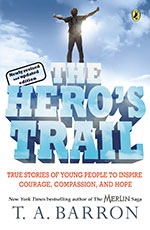 Immersed in creating more perfect fantasy worlds, Barron began to take his philosophies out of his fiction and into the world. Had Gloria Barron, who died in 2005, handed a baton to Tom? Had her very life asked, Is there more that we human beings can do? Sitting one day in his second-floor study that looks for all the world like a treehouse, Barron became Merlinesque, suddenly wanting young people everywhere to know that the real hero is not the giant who stalks the mountains, though he might be; not the eagle man who can fly into portals, or wizards who have magic, though both might be; but the ordinary, common human being who, like the tiny and fragile butterfly making the slightest shudder of its wings, decides to act.
Immersed in creating more perfect fantasy worlds, Barron began to take his philosophies out of his fiction and into the world. Had Gloria Barron, who died in 2005, handed a baton to Tom? Had her very life asked, Is there more that we human beings can do? Sitting one day in his second-floor study that looks for all the world like a treehouse, Barron became Merlinesque, suddenly wanting young people everywhere to know that the real hero is not the giant who stalks the mountains, though he might be; not the eagle man who can fly into portals, or wizards who have magic, though both might be; but the ordinary, common human being who, like the tiny and fragile butterfly making the slightest shudder of its wings, decides to act.
Barron began to collect real-life stories of young heroes who, in their spontaneous courage or thoughtful decisions, have made a difference. The stories became a book called The Hero’s Trail. Barron’s values are clear: a true hero is you, reader. Powerful if you recognize it, if you believe it.In the book he writes, “Just one act of kindness or generosity or courage can make a huge impact—on thousands of people nearby, or on one person thousands of miles away.”
Barron’s epics turn out to be an invitation, not merely to rich and surprising adventure in worlds full of fantastical creatures and places, but to readers themselves. How much can readers discover about an author from his or her books? Much. But perhaps more important: From reading a book, how much can readers find out about themselves? Perhaps that would be the best essay question of all, any time of the year.
The Gloria Barron Prize for Young Heroes
In 1999 T. A. Barron founded the Gloria Barron Prize for Young Heroes, which recognizes 25 diverse young people each year for their large and small heroisms.
Patricia Lee Gauch and T. A. Barron worked together, editor and author, for more than 20 years, during which the Kate, Merlin, Avalon, and Merlin’s Dragon epics were written and published. Barron is the recipient of the 2011 University of Southern Mississippi Medallion, an annual award honoring an author or illustrator who has made an outstanding contribution to the field of children’s literature.

